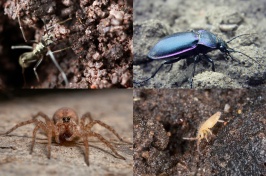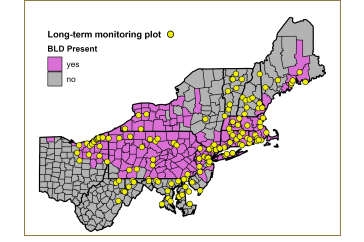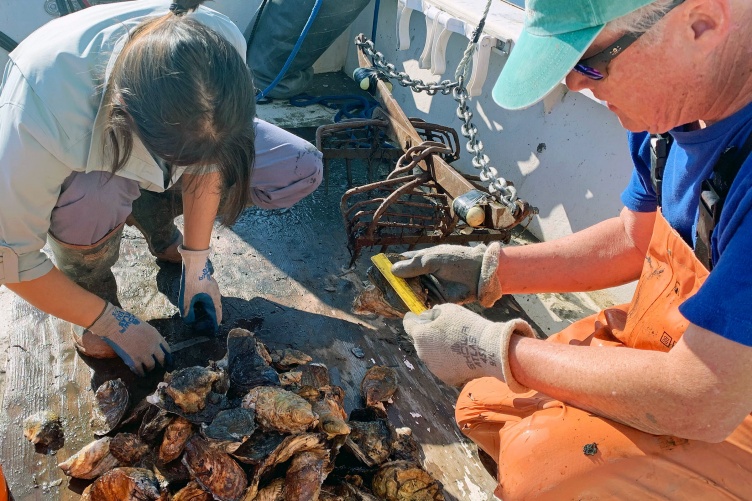
NHAES scientist Ray Grizzle (right) and student Marissa Gast measure oysters from tong samples.
An Estuary of National Significance
For years, nitrogen, phosphorus, and other nutrients have flowed in excess into the Great Bay estuary from direct, point-sources like wastewater treatment plants and indirect, non-point-sources like rain runoff from residential, urban and farming land located throughout the watershed. In large amounts, these elements can lead to eutrophication—an over-enrichment of nutrients—which can result in an abundance of algal blooms that decrease oxygen and block the sunlight to plants and animals living just below the water’s surface, like the estuary’s native eelgrass. Today, Great Bay is considered an estuary of national significance under the Environmental Protection Agency (EPA) National Estuary Program, requiring 13 wastewater plants that discharge nitrogen-rich treated water into the bay to monitor and manage the effluent.
More than 1,000 acres of wild oyster reefs once populated New Hampshire’s Great Bay Piscataqua River. However, 90 percent of those reefs have been lost over the past five decades due to pollution, over-harvesting and disease. With the establishment of the 2020 Environmental Protection Agency’s (EPA’s) Great Bay Total Nitrogen General Permit to reduce excess nutrients, such as nitrogen, from flowing into the bay and causing eutrophication and algal blooms, as well as restoration efforts occurring throughout the estuary, there have been positive signs of progress. Researchers with the New Hampshire Agricultural Experiment Station are exploring whether oysters themselves can play a role in improving water quality in the Great Bay estuary. These findings can be a win-win for the Granite State, where the shellfish aquaculture sector has grown by 900 percent in the past decade, outpacing the growth of shellfish aquaculture industries in every other state from 2012–17, according to the U.S. Department of Agriculture's Census of Agriculture.
Ray Grizzle, a station scientist and research professor with UNH’s biological sciences department, has worked in oyster aquaculture management since 1972 and has researched bivalve mollusks for more than two decades. Grizzle has conducted studies into how both farmed and wild Eastern oyster (Crassostrea virginica) in the Great Bay Piscataqua River Estuary filter nitrogen from the water and process the element in their shells and soft tissues.
“Whether the oysters are farmed, or they grow on wild reefs and then are harvested, they’re going through the same process of taking in organic nitrogen from particles in the water and sequestering that nitrogen in their shells and tissue,” said Grizzle. “They do excrete ammonia, a form of nitrogen, but there is generally a net loss of nitrogen to the environment for both farmed and wild oysters, particularly if harvested. In our 2016 paper, we determined that each oyster removes about two-tenths of a gram of nitrogen, and that they remove carbon from the system as well, once they’re harvested.”
In a 2020 study that Grizzle contributed to and which was published in Estuaries and Coasts journal, scientists showed that oysters and other shellfish can help complement land-based nutrient management practices, such as upgrades to wastewater treatment plants around the Great Bay estuary to reduce nitrogen output. The research also found that while wild oysters cycle small amounts of that nitrogen back into the environment, farmed oysters, once harvested from the estuary, directly remove the nitrogen from the aquatic ecosystem. Such a combination of oyster farming and reef restoration efforts can maximize nitrogen reduction.
According to Suzanne Bricker, principal investigator of the 2020 study and the lead scientist for oyster ecosystem services with NOAA's National Centers for Coastal Ocean Science, they estimate that nitrogen removal by existing Great Bay estuary oyster farms and reefs is 0.61 metric tons per year – and could be as high as 2.35 metric tons per year if aquaculture areas were expanded to the maximum suitable areas. An economic analysis conducted as part of the study estimates the value of the nitrogen removed by oysters was $105,000 per year, and could be as much as $405,000 per year at current and expanded aquaculture levels.
“Bioextractive removal of nutrients by oyster aquaculture and reef restoration is an additional tool in our nutrient management toolbox that will contribute to the restoration of water quality in estuaries that support oyster populations”
“Bioextractive removal of nutrients by oyster aquaculture and reef restoration is an additional tool in our nutrient management toolbox that will contribute to the restoration of water quality in estuaries that support oyster populations,” said Bricker. “The results of this study by a multi-national team of ecologists, modelers, industry specialists and economists are very optimistic, confirming that oyster removal of nutrients is a win-win-win for needed domestic seafood production and jobs in rural areas, in addition to water quality improvement.”
Today, southeastern New Hampshire is home to 20 licensed shellfish aquaculture operations harvesting from 28 sites spread across 80-plus acres in the Great Bay estuary and offshore of Rye and Hampton harbor. In 2021, nearly 831,000 oysters were harvested and had a value of nearly $600,000, according to New Hampshire Fish and Game. But Grizzle and Krystin Ward—a co-author on the 2016 paper, research assistant and supervisor at UNH’s Jackson Estuarine Laboratory, and owner-operator of the Choice Oysters aquaculture company—have their eyes on also increasing wild oyster reef restoration.
“Since 2020, New Hampshire oyster farmers have been adding farmed oysters that are too big for market to restoration sites near Great Bay’s Nannie Island natural reef, which is badly degraded,” said Ward. “This area has been closed to recreational harvesting by New Hampshire Fish and Game, who we’re working with to ‘jump-start’ the natural reef with farmed oysters and the larvae that they produce.”
She added, “Eventually these areas will reopen to harvesting, and the oysters harvested from this reef will remove nitrogen from Great Bay – the same as the farmed oysters do when we remove them from the Bay and sell them.”
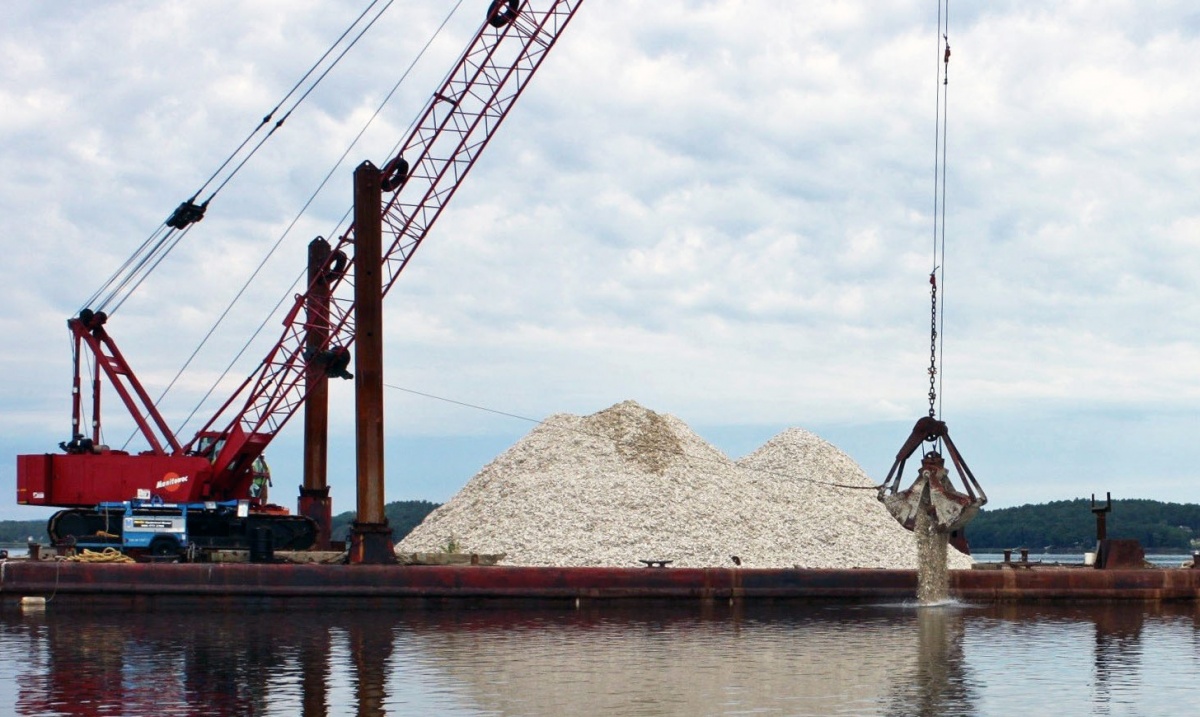
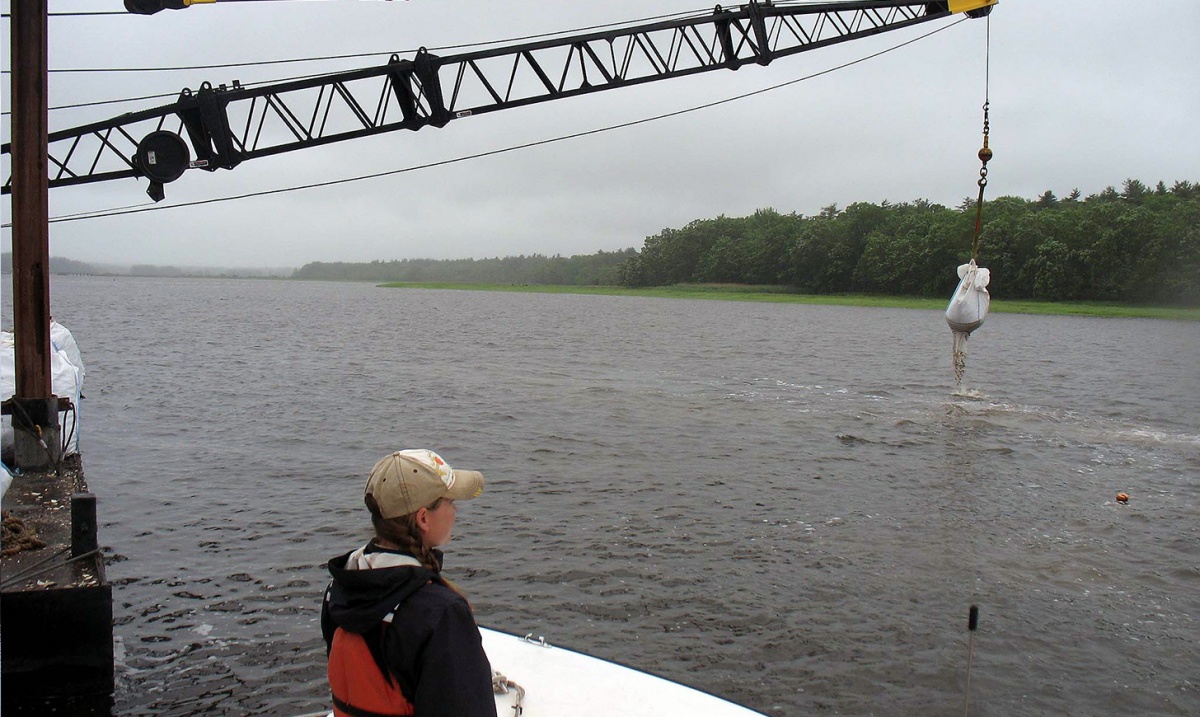
This material is based on work supported by the US Environmental Protection Agency (EPA) Regional Ecosystem Services Research Program through EPA/NOAA Interagency Agreement DW-13-92331301, NOAA/EPA Memorandum of Understanding MOA-2011-025/8258, and the New Hampshire Agricultural Experiment Station.
Read the published article Bioextractive Removal of Nitrogen by Oysters in Great Bay Piscataqua River Estuary, New Hampshire, USA, in the in Vol. 43, Issue 1, of Estuaries and Coasts.
-
Written By:
Nicholas Gosling '06 | COLSA/NH Agricultural Experiment Station | nicholas.gosling@unh.edu




























